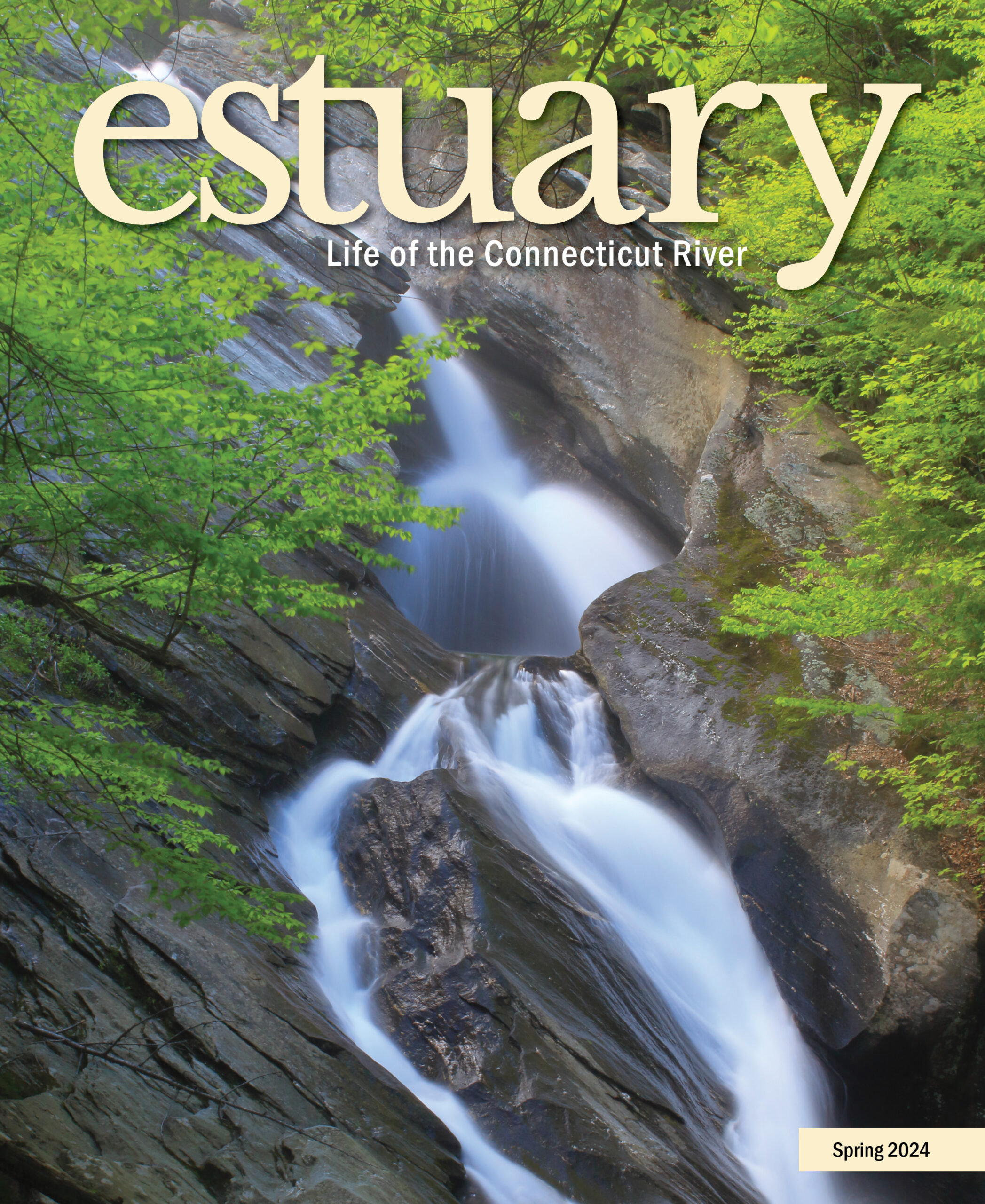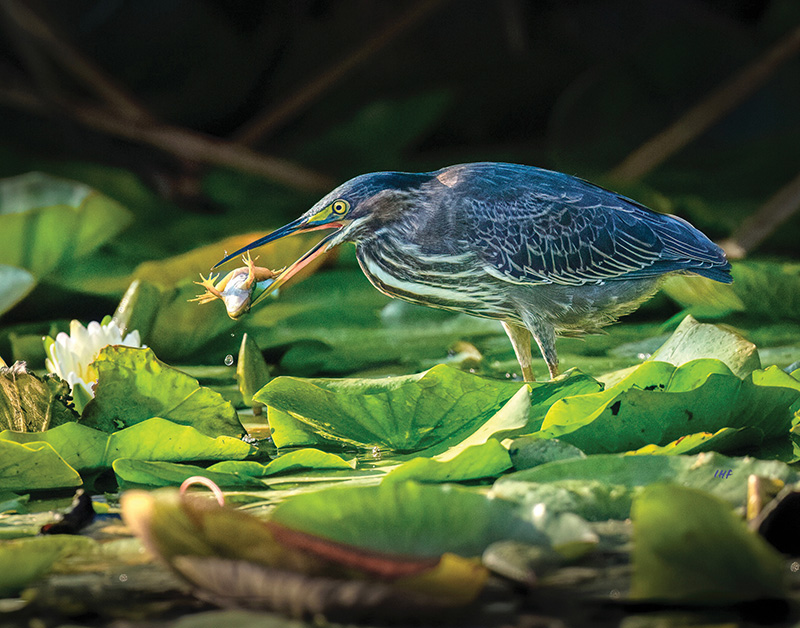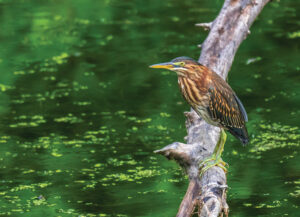 This article appears in the Spring 2024 issue
This article appears in the Spring 2024 issue

Green Herons
Meet One of the World’s Few “Tool-Using” Birds
It’s well known by birdwatchers that green herons (Butorides virescens), who are common in the Connecticut River watershed, use their daggerlike bills to seize prey.
But what may not be so well known is the green heron is one of the world’s few tool-using birds.
“Green herons are especially interesting,” explains Chris Elphick, professor of ecology and evolutionary biology at the University of Connecticut, “because they sometimes use bait when fishing—putting pieces of bread, feathers, or mayflies on the water surface and then waiting for them to attract fish—a rare example of tool use in birds.”

Green heron and frog. Image credit: Ingrid Feddersen.
That is, most times the green heron is a sit-and-wait predator. But occasionally, according to the American Bird Conservancy, they’ll take that extra step, drop a twig in the water, freeze, allow the twig to attract a minnow, then pounce. It is, indeed, a clever hunting strategy, probably learned over eons of time.
Other tool-wielding birds, to name a few, are the Egyptian vulture, which drops stones on ostrich eggs to crack them open, and the Galapagos Islands woodpecker, who uses twigs to spear grubs and pull them out of tricky holes. Crows and some parrots also use tools.
Normally, green herons are shallow water predators, hunting for crayfish, frogs, tadpoles, small fish, snakes, and aquatic insects. But they have another distinguishing trait: they swim well, aided by webs in their feet.
For example, green herons will occasionally dive for deepwater prey, forcing them to swim back to shore. And one observer, according to allaboutbirds.org, said they saw a juvenile green heron swimming gracefully for more than 60 feet, sitting upright, “like a swan.”
One early, notable admirer of green herons was John James Audubon. In 1826, for example, when Audubon first began raising funds to underwrite The Birds of America—an extraordinary, 12-year labor of love, depicting 435 different species of birds—he chose to exhibit a watercolor of a green heron as one of the few that he displayed in Edinburgh.
No wildlife painter at the time had an eye for detail like Audubon, nor did anyone paint birds quite like him. In fact, here’s an excerpt from his journal about green herons. Note the amazing details.
“The bill [is] greenish black above, bright yellow beneath. [The] iris and bare part about the eye, also bright yellow. Feet greenish yellow, claws dusky. The upper part of the head and nape, glossy deep green. Neck purplish red, tinged with lilac behind, and having anteriorly a longitudinal band of white, spotted with dusky-brown, [with] a similar white band along the base of lower mandible to beyond the eye.” And Audubon, unlike most bird painters of the time, brought all these details to bear in his paintings.

A juvenile green heron standing on a branch in the water at a park in Connecticut. Image credit: Getty Images/Jennifer Yakey-Ault.
Further, in the field, Audubon’s observational powers were exceptional.
“During the love-season,” he writes, green herons “exhibit many curious gestures, erecting all the feathers of their neck, swelling their throat, and uttering a rough guttural note like qua, qua, several times, repeated by the male as he struts before the female.”
Briefly, green herons nest along swamps, marshes, lakes, ponds, or stream sides. But before pairing and breeding, the male is the one who selects a secluded nest site and begins construction, loosely dumping a few sticks in the crotch of a tree or on top of a strong, supporting shrub. The female then takes over, shaping the rest of the nest.
Soon after, three to five eggs are laid, incubation takes 19–21 days, and the chicks fledge in another 16–17 days, with both parents caring for the young. Interestingly, juveniles have been observed staying sometimes with their parents for an extra month, presumably learning how to master capturing the wide variety of prey they consume.
Of course, during the winter, green herons migrate south, typically populating Florida and the Gulf Coast states, and return to New England in early spring.
Sadly, however, these attractive, intelligent birds are in decline. According to the North American Breeding Bird Survey, green herons have suffered a decline of approximately 1.3 percent per year, or a cumulative decline of about 51 percent between 1966 and 2019. Why?
The culprit seems to be loss of habitat. In this case, from the draining or development of wetlands. And the crime of it is, we keep draining and destroying these precious marshes and wetlands for things like new housing developments.
If you have a chance to vote to save a marsh or wetland near you, please do the right thing and vote to save them. Once these marshes and wetlands are gone, they’re gone forever.
Bill Hobbs is a contributing writer for Estuary magazine and welcomes your comments. He can be reached at whobbs246@gmail.com.
